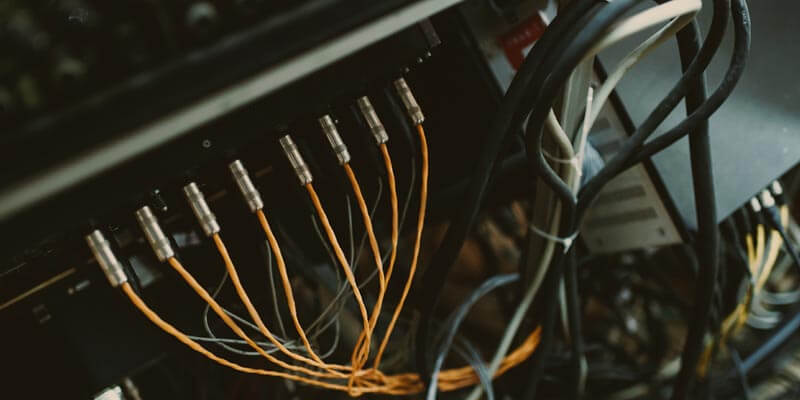Every car owner has had to face the inevitable faulty spark plug issue.
Whether the engine’s not starting up, nothing’s running like it used to, or the unit’s completely unresponsive, nine times out of ten, it has something to do with the spark plug.
Now, you can have it looked at by an expert or replace the unit itself, but why would you when you can fix it yourself? We believe that every gas-powered engine owner should know how to splice spark plug wires by themselves to save them the cost of repairs or replacements.
If you’re a newbie to splicing wires or engine maintenance, we’ve got you covered. Below, you’ll find all the information you need to fix spark plug issues at home.
What to Use While Splicing Wires?
When it comes to fixing spark plug wires, you will need tools that may not be found lying around in every garage. Before you begin splicing the wires, you will need to make sure the following are in your inventory –
In a spark plug wire splice kit, you will not only find most of these tools but other handy accessories such as cable connectors. Aside from this, a splicing tool is also something to consider for quick and easy at-home wire fixing.
A splicing tool can precisely cut through the covering of wires and strip them without nicking the delicate threads underneath. Some tools come with a crimping option at the end, which eliminates the need for another tool. If you don’t have this, an X-Acto knife and a crimping tool should work just as fine.
While dielectric grease is listed as optional, you will have to use it during the boot insertion process. It acts as a lubrication for the boot to easily slide on without messing with the wire. Most splicing kits will have a small package of dielectric grease, so you don’t have to worry about this if you own one already.
How to Splice Spark Plug Wire – Step by Step
Now that you have all your tools with you, it’s time to get into the actual splicing process. Here’s what you need to do –
Step One – Detach and Assess the Spark Plug
Uninstall the spark plug and detach the wire connecting to it. Take a moment to assess the damage. A broken spark plug wire will have a small portion of the plastic casing bitten off by the spark plug open barrel terminal.
Don’t worry; this means the problem should be easy to fix. So, let’s continue.
Step Two – Remove Damaged Open Barrel Terminal
Take a pair of needle-nose pliers and carefully pull off the damaged open barrel terminal from the spark plug. If you don’t have fresh terminals and want to reuse the old terminal, you will also have to remove the bitten-off wire casing.
For this, take two pairs of needle-nose pliers, and attach each to either side of the terminal. Now, carefully pull outwards. Once the terminal is loose around the casing, the damaged wire bit should fall out easily.
Step Three – Strip the Wire
Given that you’re dealing with a spark plug wire broken inside, it will need to be cut to re-establish a connection with the spark plug. First, use a pair of side cutters to remove only the damaged bit of the wire.
Then, use a stripping tool, utility knife, or X-Acto knife to strip off the casing to the single insulation around the actual wire. Cut this thin casing off; the wires should now be visible. You will have to be extra careful using knives as they can nick the wires inside the casing.
Remember to shorten the wire sparingly. If you cut too much off the wire, it will pull and risk malfunctioning or having an impaired connection to the spark plug. Wires that are too short might not even reach the spark plug and distributor.
If you need to know how to lengthen spark plug wires, you can buy solid copper wires and use them as extensions to your existing wire. But we recommend building a new spark plug wire to be on the safe side.
Step Four – Slide on the Boot
A boot helps to protect the connection site from further damages and other damaging factors such as moisture. To fit on the boot, use a little bit of dielectric grease for lubrication. Put the grease on the opening of the boot, and insert the wire into it (cut the ends first).
Again, a small engine spark plug wire repair kit will already have this product included.
Twist the boot as you slide it along the wire so that it moves quicker. Leave the boot on the wire for now. After you have secured the open barrel terminal, you can slide it over the connection site.
Step Five – Crimp the Terminal
Slide the end of the wire you have just shortened into the open barrel terminal end. Here, you will have to fold the wire back so that it stays between the inside of the terminal and the outer wire casing.
You will also notice the terminal sliding off the wire, which means you will have to crimp it on. You can either use a crimping tool or a pair of pliers for this step.
Without a crimping tool, you will need two types of pliers – one pair of needle nose pliers and another pair of regular pliers.
First, use the needle-nose pliers to curve each end of the terminal so that the ends face inwards. Then, slide the wire in and use the regular pliers to tighten the terminal around it.
Slide the boot over the terminal. You should now have a wire set to fit into a spark plug.
Step Six – Insert the Spark Plug
Now, put the spark plug on the other side of the boot and connect the terminal to it. Once they have connected, slide the boot upwards a little more so that it sits right at the intended position marked on the spark plug.
You now have a newly spliced and fixed spark plug wire.
Final Step – Test It Out
Reinstall the spark plug to your engine. Connect the end of the plug wire to the coil. Please put on the heat shield over the fixed end of the plug wire, and connect it to the spark plug. Start the engine, and you should be able to hear it running properly.
If you’re worried about testing the newly spliced wire and don’t want to risk anything, we highly recommend doing a test for continuity with a multimeter. Do this test between the tip of the connector you’ve just made and the inside of the spark plug boot.
Taking this extra step will give you a clear idea of whether the spark plug wire is safe to use.
FAQ
Splicing a lawn mower’s spark plug has a similar process to the one we have detailed. The only difference is that there’s a cleaning process to remove dirt and grease and an added insulation layer before sliding on the boot. You can do this with electrical tape.
One end of the spark plug wire has a boot with the terminal meant to fit into the spark plug itself. On the other end is the connection for the distributor or coil pack. You will find the openings to be circular at the top and cylindrical lengthwise. Push the wire in until you wear a soft “click” sound, which means it’s secure.
A coil pack should have markings to show you which spark plug wire connects to each cylinder. By using your engine’s manual or doing a quick internet search, you can find a diagram of your motor to identify each cylinder and connect them to their respective spark plug wires.
In order to fix a cut spark plug wire, you will have to remove the damaged part with a pair of side cutters. To do this, go to Step Three in our Step-by-Step section.
Conclusion
Even if you still have cold feet about trying out how to splice spark plug wire on your own, don’t worry; you’re not alone. Many people, especially beginners, have trouble fixing motors, whether lawnmowers or cars.
The good news is that there’s always room to try, and you can always go to an auto tech if things go south. Our final piece of advice is to go through our instructions carefully. If you do these steps right, you’re bound to have your spark plug working just like it used to.


